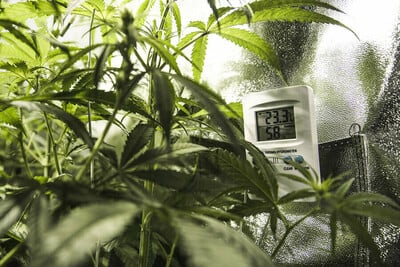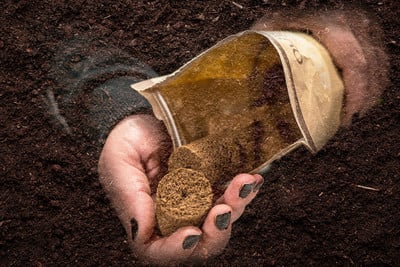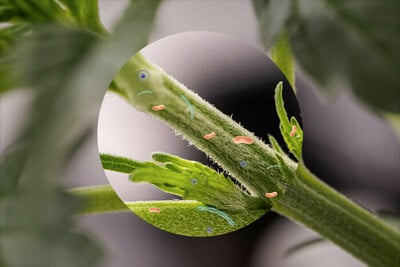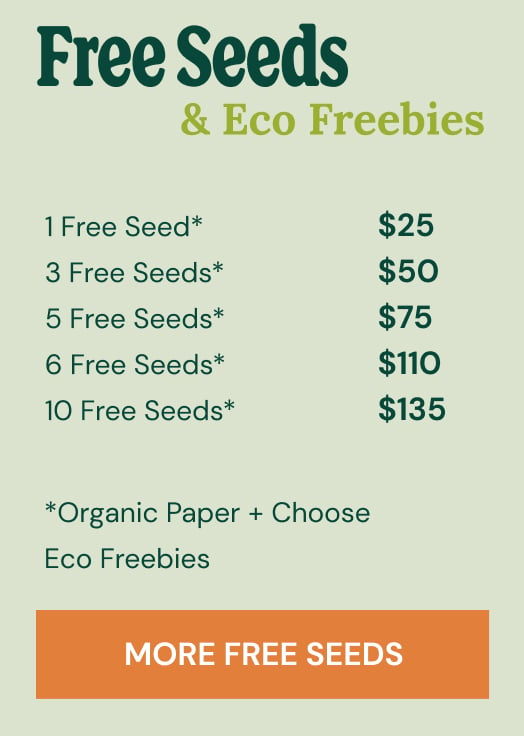.
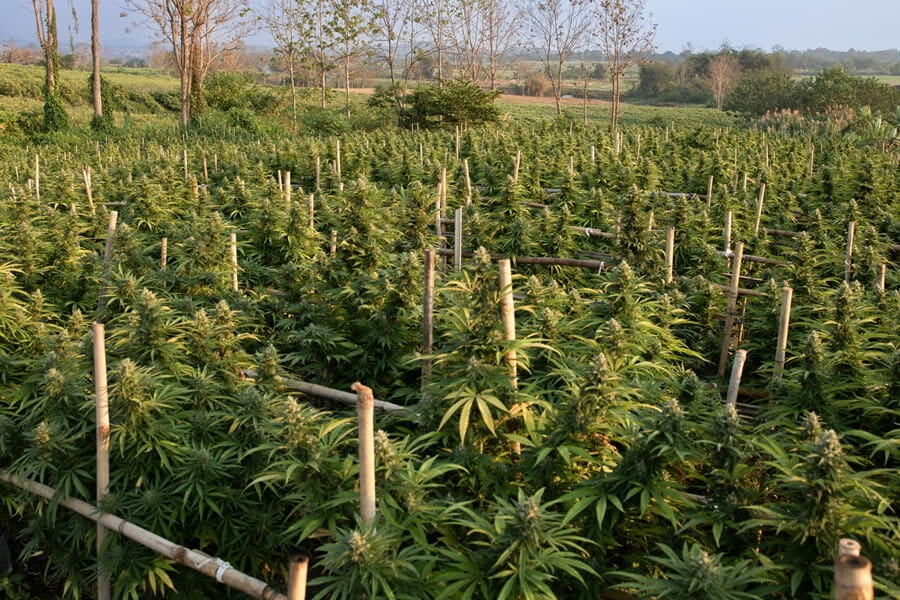
The Benefits of Biointensive Growing for Your Cannabis Garden
Biointensive growing enables cannabis cultivators to maximise yields in any given space while using eco-friendly methods. These techniques work with nature, instead of against it, to produce flawless results. Learn why and how to use biointensive growing to achieve large harvests of potent buds from healthy plants.
Contents:
Key Points
- Biointensive gardening seeks to grow as much cannabis as possible in a given space.
- The technique relies on close planting densities and organic fertilisation to produce great results.
- Composting, water harvesting, and homemade inputs make the method rewarding and eco-friendly.
- Discover how to make biointensive gardening work in your cannabis growing space.
Biointensive gardening is an organic and sustainable approach to growing cannabis that aims to maximise productivity within a given space. The technique utilises deep soil cultivation, intensive planting patterns, and companion planting to optimise plant productivity and quality.
Whether you’re growing in one bed or ten, biointensive gardening will take your yields to new heights, all while improving soil fertility and benefiting the wider environment. Discover the benefits of this technique below before learning how to pull it off in your growing space.
Understanding Biointensive Gardening
As a regenerative agricultural practice, biointensive gardening primarily aims to produce vigorous, productive, and healthy cannabis plants. However, the technique achieves much more than an abundance of potent buds.
Biointensive gardening also preserves resources such as water, improves soil quality by fostering the proliferation of beneficial microorganisms, and benefits surrounding wildlife—from birds to insects. By mitigating the use of noxious inputs such as chemical fertilisers and pesticides, it also eliminates harmful runoff into the local ecosystem.
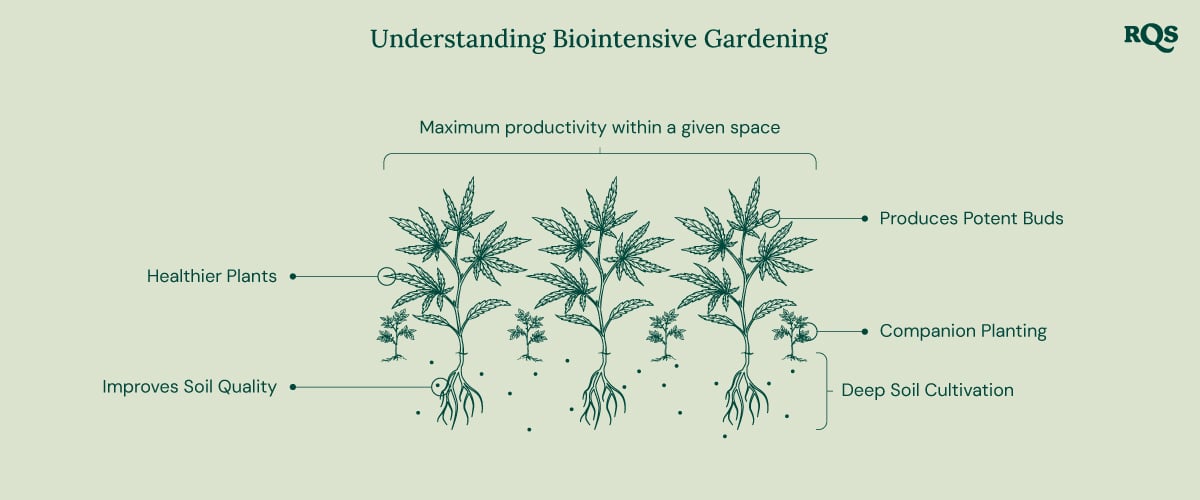
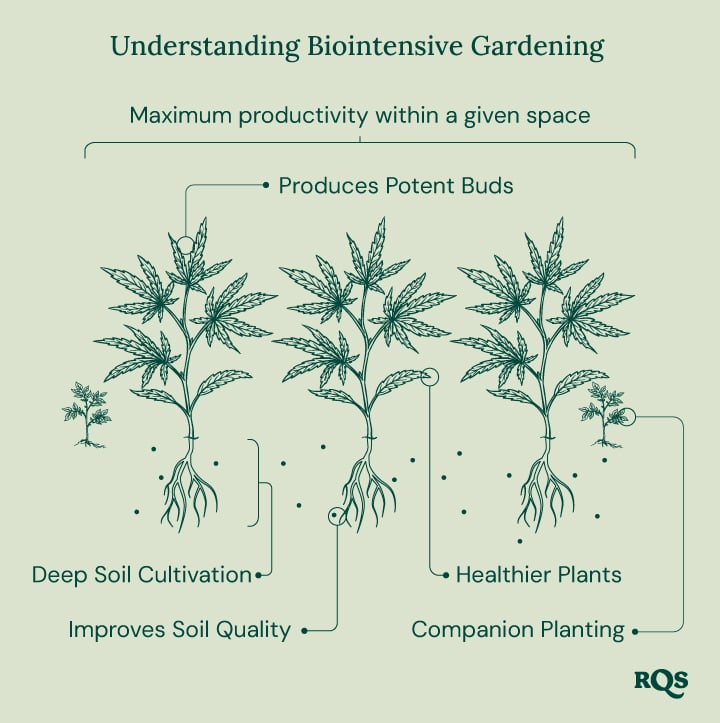
The Principles of Biointensive Gardening
Growing biointensive cannabis revolves around these fundamental principles:
- Intensive planting: Growing plants as closely together as possible maximises yield and makes the most of a given growing area. The technique unlocks superior yields, even in relatively small spaces.
- Deep soil cultivation: Biointensive growers “double dig” to a depth of 60 cm, loosening the soil far below the surface. This approach allows roots to grow much deeper, helping plants to reach their full potential even when planted close together. Deep soil cultivation also helps beds to hold water and nutrients.
- Composting: Converting garden waste and kitchen scraps into compost underpins the entire biointensive system. Composting helps to prevent waste while improving the structure of soil and feeding the important microbiology below the surface.
- Companion planting: Companion plant species such as dill, yarrow, basil, and borage bring a host of benefits to the table, from blocking the spread of diseases to attracting predatory insects that reduce pest pressure.
- Crop diversity: Biotensive cannabis growing seeks to cultivate polycultures instead of monocultures. Crop diversity ensures the presence of different plants that fulfill unique functions, from attracting specific insects to pulling minerals up from deep in the soil.
- Water conservation: Biointensive growing encourages cultivators to water thoroughly but less frequently. Deeply cultivated soil retains water, reducing the need for frequent irrigation. The use of mulches and rainwater harvesting also drastically reduces dependence on mains water.
-
What Is the Difference Between Intensive and Extensive Gardening?
There are countless different gardening techniques out there for weed growers to try. However, all of them generally fall into one of two categories: intensive and extensive.
Intensive growing aims to produce the largest possible yield per square metre. Focusing on high productivity above all else, conventional methods use significant quantities of water and synthetic fertilisers, often at the expense of the soil and the quality of the crop.
While biointensive gardening also aims for maximum productivity, it does so while working to improve the soil, using tools that reduce or eliminate reliance on fertilisers.
In contrast to conventional intensive growing, extensive gardening places less emphasis on productivity per square metre. Often conducted on large areas of land, growers are able to raise plants in lower densities, which requires less intense application of fertilisers, water, and other inputs.
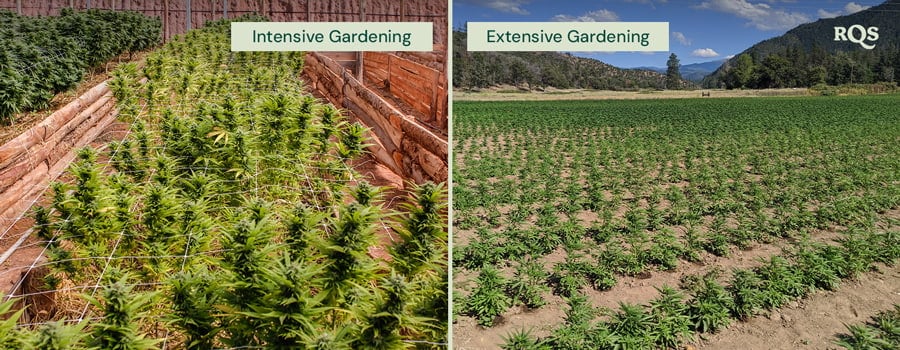
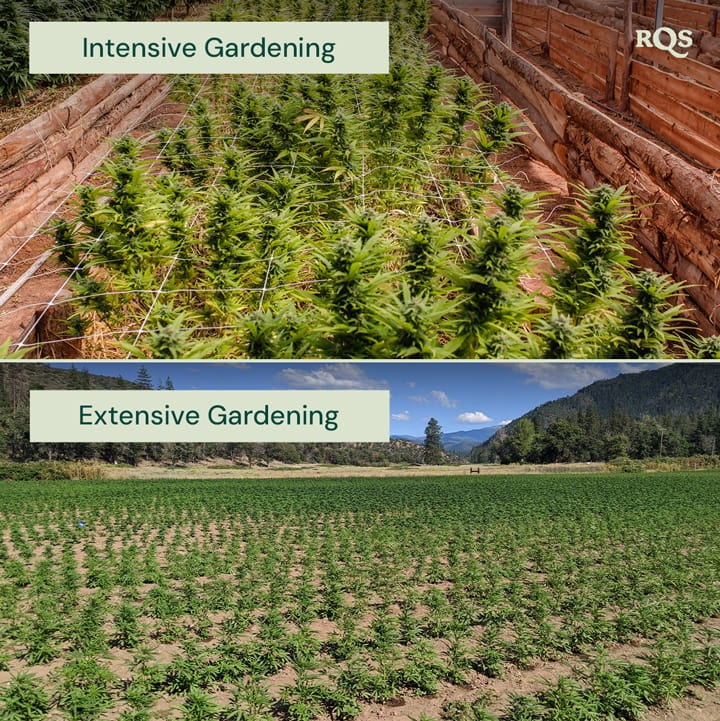
Benefits of Biointensive Gardening When Growing Cannabis
Biointensive gardening offers benefits to growers of all different types of plants. However, it has found particular popularity amongst cannabis growers who have an interest in organic, regenerative, and environmentally friendly methods.
In the context of cannabis, biointensive growing offers a suite of benefits, from resource efficiency and soil fertility to combating weeds and pests. Discover exactly how this method can improve your outdoor cultivation results below.
-
Resource Efficiency
There’s truth to the trope that cannabis users are often fond of nature. Something about toking the herb helps them see their surrounding environment in a new, more compassionate light. However, in some contexts, cannabis cultivation itself does more harm to the environment than good.
Research shows that large-scale commercial growing operations take a toll on the environment. Not only do indoor facilities rack up huge electricity bills with fans, heaters, and lighting, but outdoor farms use a staggering amount of water compared to other crops. On average, just a single plant receives 22.7 litres[1] of water per day in some growing situations.
Not only does growing cannabis at home offer eco-conscious consumers an alternative, but cultivating in the right ways can also reduce their individual footprint. Biointensive growing provides an ideal solution to lowering our impact on the environment.
-
Soil Productivity & Fertility
Modern commercial agriculture has run into a big soil problem. By overworking it, tilling it to an extreme, and dousing it with herbicides and fertilisers, they’ve essentially abused the source of our food. Farmers do noble work the best way they know how, but the approaches used since the Green Revolution in the 1960s have enhanced yields at the expense of soil health.
Thankfully, advances in the field of regenerative agriculture have begotten new methods of creating profitable yields while simultaneously improving soil health. Biointensive growing offers a promising solution, especially for smaller-scale market gardeners and weed growers.
Although this method disrupts the soil through double digging, it essentially resets the stage of progression to an environment in which beneficial bacteria thrive. Annual plants, such as some vegetables and cannabis, flourish in these conditions.
Additionally, application of compost, mulch, and organic fertiliser feeds the soil itself, not just the plants growing within it. Over time, the biology in the soil becomes a complex web of life that effectively breaks down organic matter and cycles nutrients into plants, either in the form of entire bacterial cells or liberated minerals.
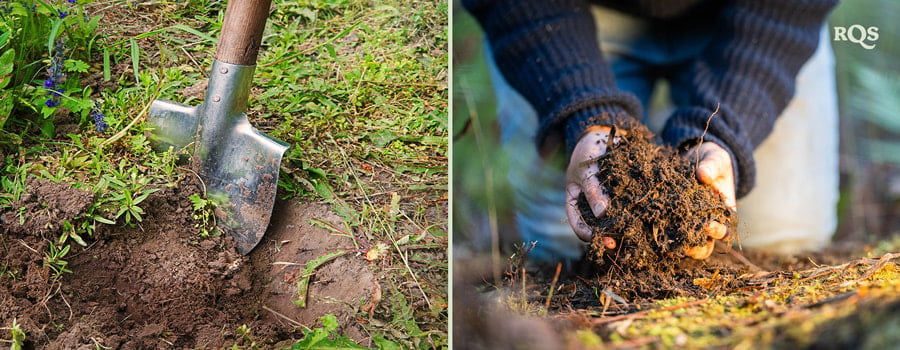
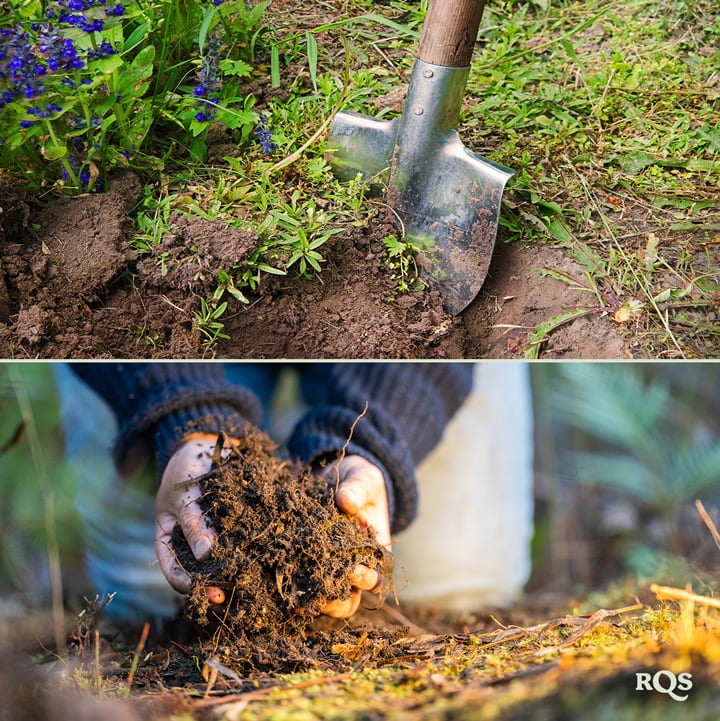
-
Ecological Advantages
Aside from benefiting the microscopic life in the soil, biointensive growing also helps the life above the surface. Growing dense polycultures attracts pollinators and predatory insects, a mouthwatering banquet of nectar, pollen, and prey species, and results in a palette of attractive colors to boot.
During peak season, you’ll find that you’ve essentially provided a habitat for many different kinds of insects and animals, all while creating a better environment for your cannabis plants to thrive.
-
Closed-Loop System
Closed-loop systems help to minimise waste and reduce inputs. When growing weed the biointensive way, you’ll send many of your waste streams directly to your compost bin, including garden waste, kitchen scraps, and cardboard packaging.
At the end of the season, you’ll compost all of the remaining plant matter in your beds. As time progresses, you’ll start to harvest rainwater and make fertilisers from grass clippings and weeds.
Before long, you’ll find yourself growing cannabis at an extremely low cost, all while reducing your environmental footprint in the process.
-
Fewer Weeds
If you’ve ever grown cannabis outdoors, or any plants for that matter, you’ll know how much time needs to be spent on ridding your beds of weeds. Alongside all of the other benefits, biointensive growing drastically cuts down the time you’ll spend plucking weeds from the soil.
First, a high planting density creates a thick canopy that lets very little light hit the surface of the soil, starving out weeds before they get the chance to gain a foothold. Second, applying a thick layer of mulch for water retention also helps to keep weeds at bay.
-
Efficient Use of Small Spaces
Are you dealing with a small outdoor growing space? Perhaps even a single raised bed? Well, don’t be disheartened! Biointensive growing fits your situation perfectly.
Provided you have decent sun exposure, you can easily grow several densely planted specimens and expect a rewarding harvest. Don’t let a perceived lack of space hold you back.
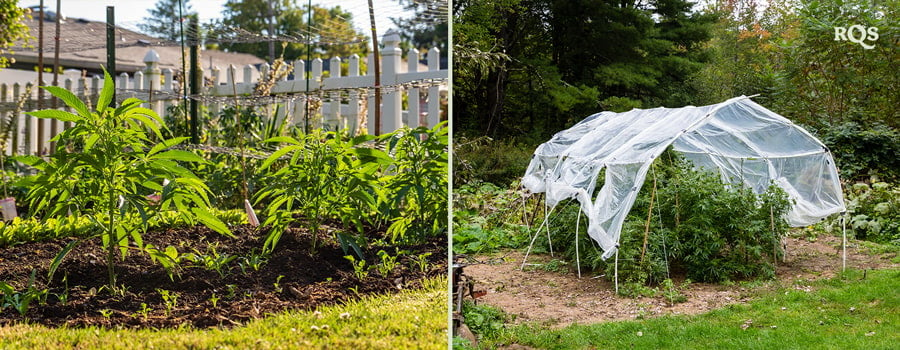
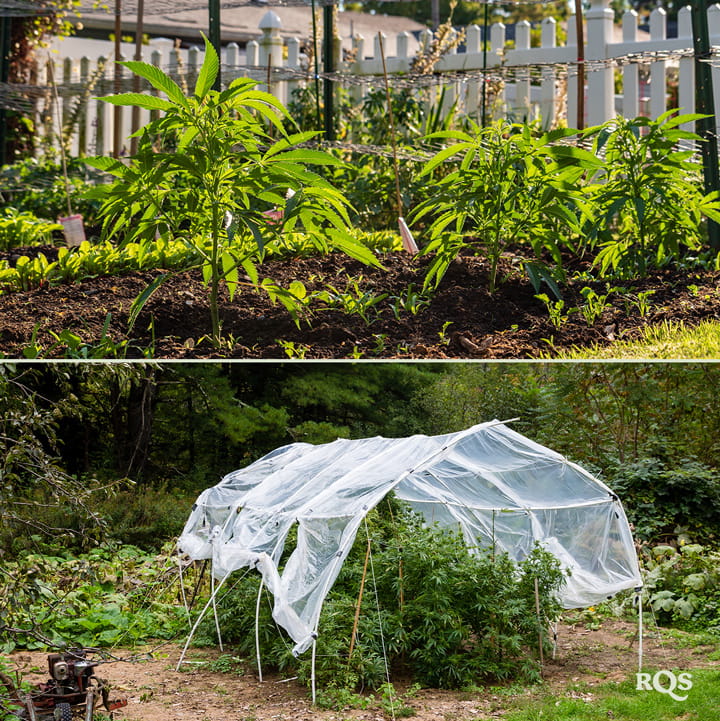
Starting Your Biointensive Cannabis Garden
You’re now aware of the core benefits of adhering to the biointensive method. Next up, you’re going to learn how to put these growing techniques into practice. Let’s get into it!
-
Location & Layout
The location and layout of your garden will determine its success when applying the biointensive method. You don't want to place your plants too close together or too far apart, and you want to ensure they get as much light as possible.
If you have the option, place your beds in a south-facing position where they’ll receive the most direct sunlight over the course of a day. When it comes to plant spacing, aim for 60 cm for indica-dominant strains, 90 cm for sativa-dominant varieties, and 45 cm for autos.
Remember to leave a few spots empty for companion plants[2]. There are many species to choose from, and many are edible!
-
Deep Soil Preparation Techniques
With your plants so close together, you’re going to have to allow some serious vertical growth. The average spade features a length of around 30 cm, so double digging will allow you to reach a depth of 60 cm.
Start by digging out parallel trenches to a depth of 30 cm on the initial dig. Then, repeat the process to reach a depth of 60 cm. You can either backfill the soil on its own, or add in compost and worm castings to enhance drainage and the organic matter content of your soil.
Once filled, transplant your weed plants into the prepared strips at the appropriate spacing.
-
Fertility
Consider the following options during the growing season to keep your plants and soil fed:
- Compost: Add homemade compost as a top dressing every two weeks to feed the beneficial microbes and worms in your soil.
- Compost tea: Make your own compost tea and apply it as a root drench and foliar spray. It works as a probiotic that helps to defend against diseases and increase nutrient cycling.
- Fermented plant juice: Add weeds to a bucket of water and let it steep for a couple of weeks. Then, add one part of this concoction to ten parts water and apply it as a high-nitrogen root drench.
-
Water Management
The dense canopy in your beds and a thick layer of mulch will help to keep your soil moist. However, you’ll still need to irrigate it from time to time, especially during hot spells.
Harvest rainwater using a water butt linked up to your guttering system. Connect a drip irrigation line to the water butt to keep your plants hydrated all season long while remaining off the water grid.

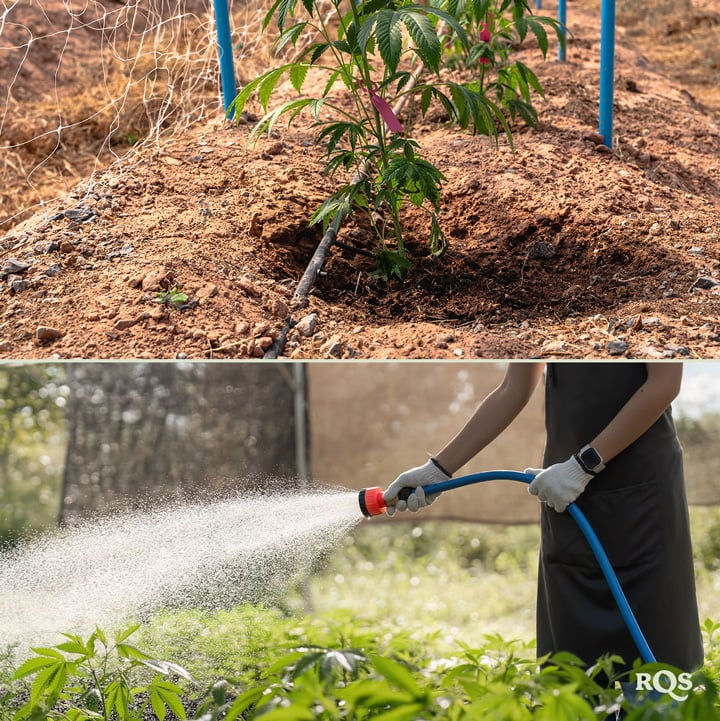
Improve Yields and Productivity with Biointensive Gardening
Biointensive cannabis cultivation doesn’t just produce healthy cannabis plants that are highly productive and less prone to diseases. You’ll also save a bunch of cash over the seasons as your soil increases in fertility and you experiment with new ways to secure your closed-loop system.
As your soil quality increases and you refine your fertiliser regimen, you’ll find you produce bigger and better buds with each harvest. Plus, you'll have fun harvesting your companion plants and using them in dishes or drying them out and making a stash of herbal tea.
Alongside the great results at the end of the season, you’ll also experience a sense of accomplishment knowing you’ve reduced your environmental footprint and helped to steward your local wildlife, from microbes and insects to other animals.
- A narrative review on environmental impacts of cannabis cultivation | Journal of Cannabis Research | Full Text https://jcannabisresearch.biomedcentral.com
- Companion Planting for Cannabis - Royal Queen Seeds UK https://www.royalqueenseeds.com


























